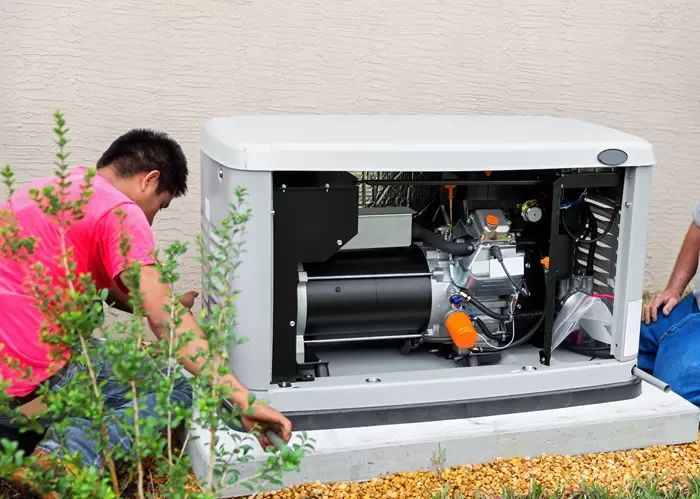Portable generators are essential for providing backup power during outages or for use in remote locations. Choosing the best one for home use depends on power needs, fuel type, runtime, and portability. This guide will help you understand the key features of portable generators and recommend the best options available.
How Does a Portable Generator Work?
A portable generator converts mechanical energy into electrical energy using an internal combustion engine. Here’s a simple breakdown:
Fuel Combustion : The engine burns fuel (gasoline, propane, or diesel) to produce mechanical power.
Alternator Operation : The engine spins an alternator, which generates electricity through electromagnetic induction.
Power Output : Electricity is delivered through outlets, allowing you to plug in appliances and devices.
Most portable generators produce 120V or 240V AC power, similar to household electricity. However, they do not automatically turn on during a power outage—you must start them manually.
Key Factors to Consider When Choosing a Portable Generator
Power Output (Wattage)
The generator’s wattage determines how many appliances it can run simultaneously.
Starting Watts : The extra power needed to start motor-driven appliances (e.g., refrigerators, air conditioners).
Running Watts : The continuous power required to keep devices running.
For home use
1,000–3,500W : Powers essential devices (lights, fridge, small electronics).
5,000–8,500W : Runs multiple appliances (HVAC, water heater, tools).
10,000W+ : Whole-house backup (requires a transfer switch).
Runtime & Fuel Efficiency
A generator’s runtime depends on fuel capacity and load. Look for:
50% load runtime : Most generators list runtime at half capacity.
Eco-mode : Adjusts engine speed to save fuel during low demand.
Noise Level
Generators produce noise measured in decibels (dB). For home use:
50–60 dB : Quiet (suitable for camping/RVs).
70–80 dB : Moderate (typical for most portable models).
90+ dB : Loud (industrial use).
Portability & Design
Weight : Lightweight (50–100 lbs) for easy transport.
Wheels & Handles : Essential for moving heavy units.
Compact Size : Fits in storage spaces.
Safety Features
Automatic Voltage Regulation (AVR) : Prevents power surges.
Low-Oil Shutoff : Protects the engine from damage.
GFCI Outlets : Reduces electric shock risk.
CO Detection : Shuts off if carbon monoxide builds up.
Best Portable Generators for Home Use in 2024
Honda EU2200i (Inverter Generator)
Power: 2,200W (peak), 1,800W (running)
Fuel: Gasoline
Runtime: 8.1 hrs (25% load)
Noise: 48–57 dB
Best For: Quiet, reliable power for essentials
Champion 3800-Watt Dual Fuel
Power: 3,800W (gas), 3,420W (propane)
Fuel: Gasoline/Propane
Runtime: 9 hrs (gas), 10.5 hrs (propane)
Noise: 68 dB
Best For: Versatile, mid-range power
Generac GP6500 (Heavy-Duty)
Power: 6,500W (peak), 5,500W (running)
Fuel: Gasoline
Runtime: 10.5 hrs (50% load)
Noise: 74 dB
Best For: High-power needs, emergencies
Westinghouse WGen9500DF (Dual Fuel)
Power: 9,500W (gas), 8,500W (propane)
Fuel: Gasoline/Propane
Runtime: 12 hrs (gas, 50% load)
Noise: 72 dB
Best For: Whole-house backup
How to Safely Use a Portable Generator
Placement : Keep outdoors (20+ ft from windows) to avoid CO poisoning.
Grounding : Some models require grounding with a copper rod.
Transfer Switch : For home backup, install a transfer switch to avoid backfeeding.
Maintenance : Change oil, clean air filters, and use fuel stabilizer.
Conclusion
The best portable generator for home use depends on your power needs, fuel preference, and budget. For quiet operation, the Honda EU2200i is excellent, while the Westinghouse WGen9500DF is ideal for whole-house backup. Always prioritize safety and proper maintenance for long-lasting performance.
By understanding wattage, fuel types, and safety features, you can choose the perfect generator to keep your home powered during outages.

